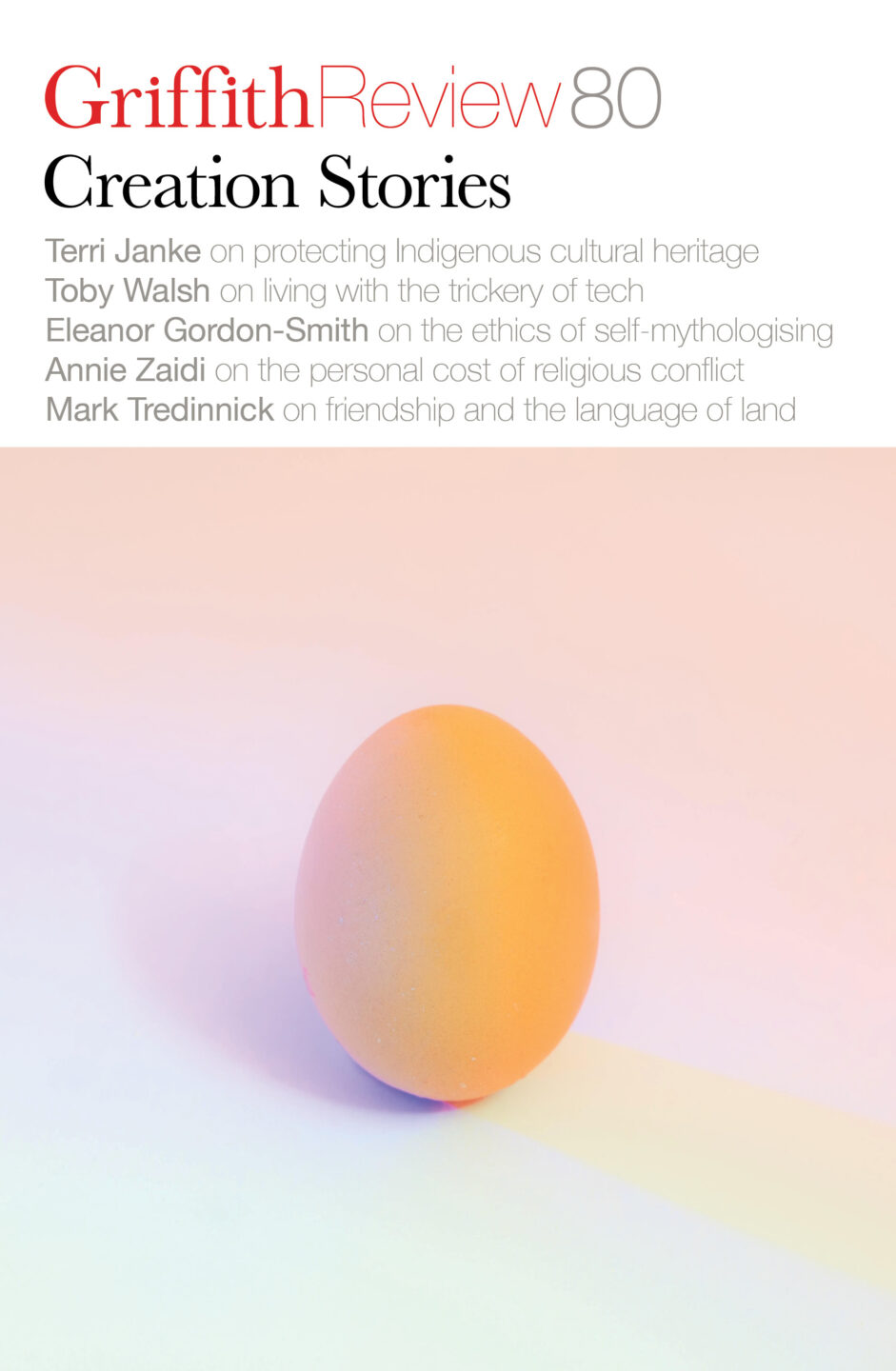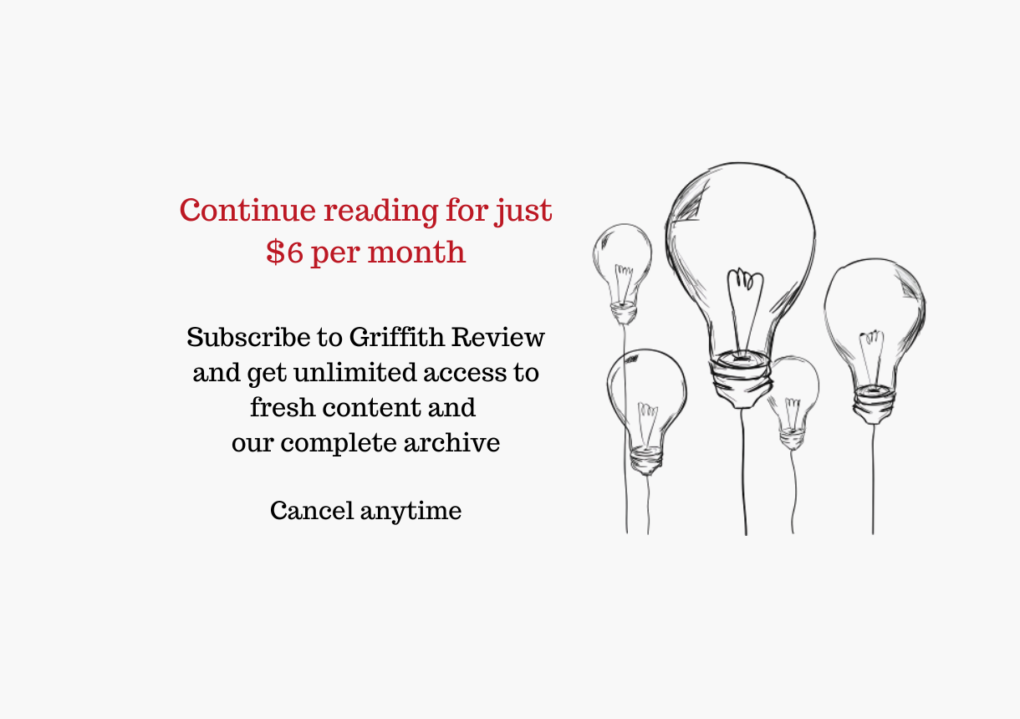Featured in

- Published 20230502
- ISBN: 978-1-922212-83-2
- Extent: 264pp
- Paperback (234 x 153mm), eBook


Already a subscriber? Sign in here
If you are an educator or student wishing to access content for study purposes please contact us at griffithreview@griffith.edu.au
Share article
More from author

Golden girls
ReportageWho would have thought it possible a generation ago – young women spending the day, every day, wrestling? Who could have imagined that a gate at the entrance of Balali would welcome all visitors in the name of these girls who have brought glory to the village? That this would be possible in a state that has been in the news for all the wrong reasons – including female foeticide, honour killings and rape?
More from this edition

On the right track
Non-fictionWhen the National Cultural Policy was released, the Albanese government stated their commitment to developing legislation to protect Indigenous Cultural and Intellectual Property. At last there will be a legal framework which can not only protect Indigenous peoples’ rights, but also set the pathway for better sharing of culture and greater respect for Indigenous cultures as the oldest living cultures in the world.

A Little Box
PoetryAnd didn’t I grant you six identical faces, each perfectly plain as the other and a sturdy mouth to clasp shut?

Rare
PoetryThere are many ways to carry a story. My father smothered his stories with bravado. Here he is, laughing at the sea drenching him on the deck.